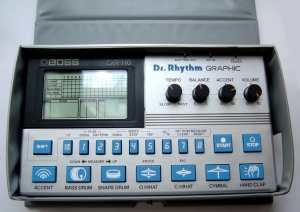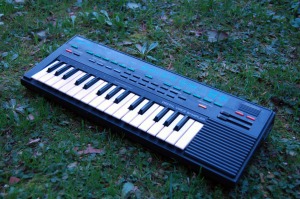The Roland TR-606 was the cute sister of the great TB-303.
Roland intended to sell this pair of silver boxes to guitar players or organ players as substitutes to a bassist and a drummer.
But in the early 80s , when the popularity of sample based drum machines was growing up with the Linn drum, Oberheim DMX, Emu Drumulator, the TR-TB combo sounded really poor and unnatural to rock players who were astonished by the fidelity of the sampled sounds.
So the poor silver boxes were sold just for practicing musicians on a budget.
During the 80s many electronic bands with low budget started using both the 606 and the 303 till , in 87/88 DJ Phuture enstablished the sound of the TB-303 as a new mainstay in the dance culture.
The TR606 , often used in early new wave electro-bands became famous as a great techno drum machine, along with its bigger sisters the TR 808, TR909.
So, despite its limitation the TR606 has gained its place in electronic music appearing in many awesome records by Aphex Twin, Squarepusher, Autechre, Kid 606, 808 STATE and many more…
The TR606 is a fully analog drumsynth with a digital sequencer.
The machine has seven sounds plus accent.
- Accent
- Bass drum
- Snare drum
- Lo tom
- Hi tom
- Cymbal
- Open hat
- Closed hat
The sequencer is really pretty easy to use.
It can be programmed in Step or Realtime, and is the classic 16 step TR sequencer.
You select the instrument and press the step that corrispond to the trig you want.
Really easy and user friendly!
The sequencer can also be used trig synth arpeggiators or other old machines with sync in.
The two toms have two triggers out to do it.
The 606 has a din port to sync (in or out ) with other machines that use the Roland sync 24.
The sounds are typical electronic analog sounds very close to the TR808, but with their own carachter.
The TR606 has a more aggressive and less smooth tone compared to the 808, it could be the 808 on acid!
The bassdrum kicks in a medium range, the snare is hard and snappy the hats and cymbal are really tinny, while the toms are great for that tribal electro rhythm.
This is a great analog drum machinee that’ is growing in price and popularity, I love mine and I think any electro/techno producer should own one!






